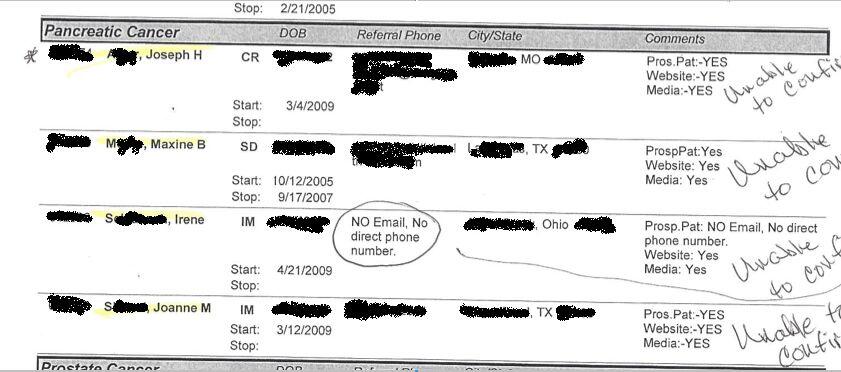Burzynski Patient Joseph A.’s Story
*An appeal to encourage Congress to investigate this follows Joseph’s story*
Joseph A. was diagnosed with pancreatic cancer in just at the end of December 2008. At the time of diagnosis, he was told that the average life expectancy for this notoriously difficult cancer was 14 months from diagnosis. Six or seven weeks of conventional treatment failed Joseph and he contracted an infection from his chest catheter.
Sometime in the Spring, it seems, he decided to go to the Burzynski Clinic. On his page at The Burzynski Patient Group, Joseph said:
“My first appointment with the clinic provided me with the hope that I had been lacking since my diagnosis in December. The B Clinic stated my odds for cure were 50/50, versus the “less likely” , “doubtful” and 10-15% I was hearing from my oncologist and gastroenterologist, respectively. I started taking the medications immediately.”
These six medications suggest that he was on the typical chemotherapy cocktail that most of Burzynski’s patients end up on. He was still experiencing the intense pains beneath the rib-cage that had led him to his diagnosis in the first place. But, he reports, a few days after starting his new regimen, the pains subsided:
After two uneventful and physically comfortable months of taking the medication I had the PET scan repeated. I was informed that the tumor was dead because there was no metabolic activity. It had not shrunk, but just died and thus could do me no further harm.
His doctors told him that his next PET scan was the same, and he was waiting for his third and final scan during treatment when he wrote up his story on the Burzynski Patient Group on 15 Sept 2009.
Three days later, Wayne Merritt, a prospective pancreatic cancer patient at the clinic (who was later threatened at home by someone hired by Burzynski), was given a list of pancreatic cancer patients who had survived to contact. Joseph was on there:

Thank God for Dr. B. and his warm, caring staff.Thanks, Joe
Usually, this is where we would put an appeal to donate to St. Jude’s. You may still do that, if you like, but we are now actively campaigning for an investigation into how the FDA decided to allow Burzynski not only to continue his ridiculous trials, but to actually get a phase III trial after a decade of abominable site visits. Go to thehoustoncancerquack.com and you will find the resources you need to put primary documents–the FDA inspection notes–into the hands of your representatives so they can conduct an investigation. All appeals to understand this made to the FDA have failed, so now we need to press the issue onto the committees that oversee the FDA. Please help us uncover what went wrong so we can fix it and so this never happens again. Find out about real clinical trials by visiting clinicaltrials.gov.